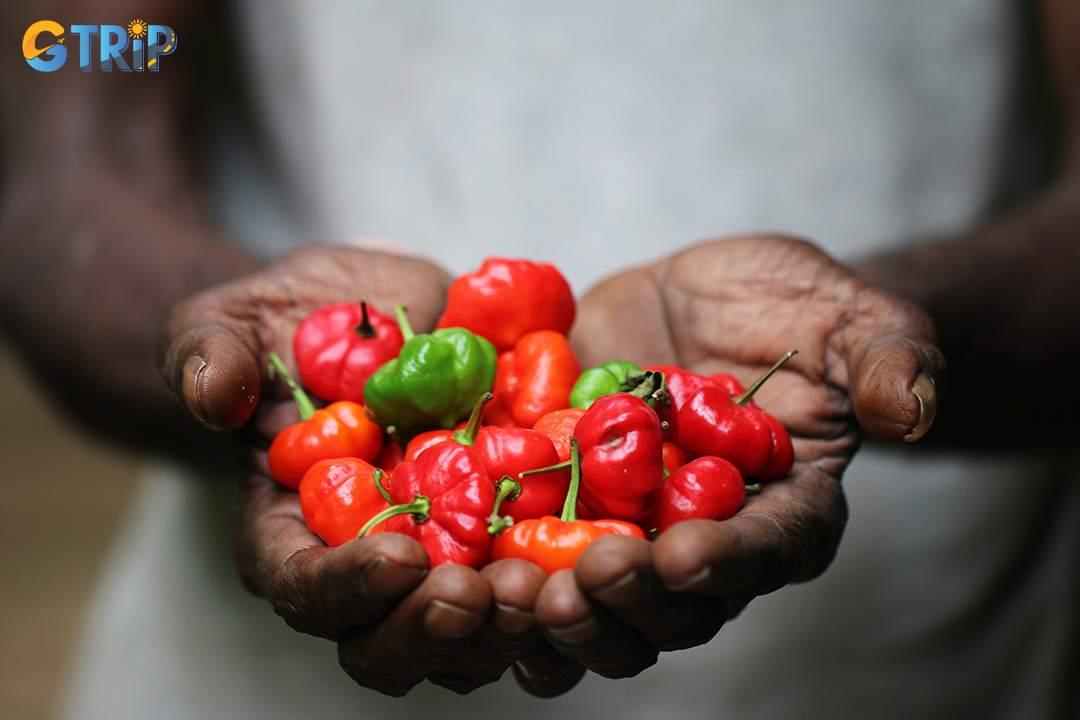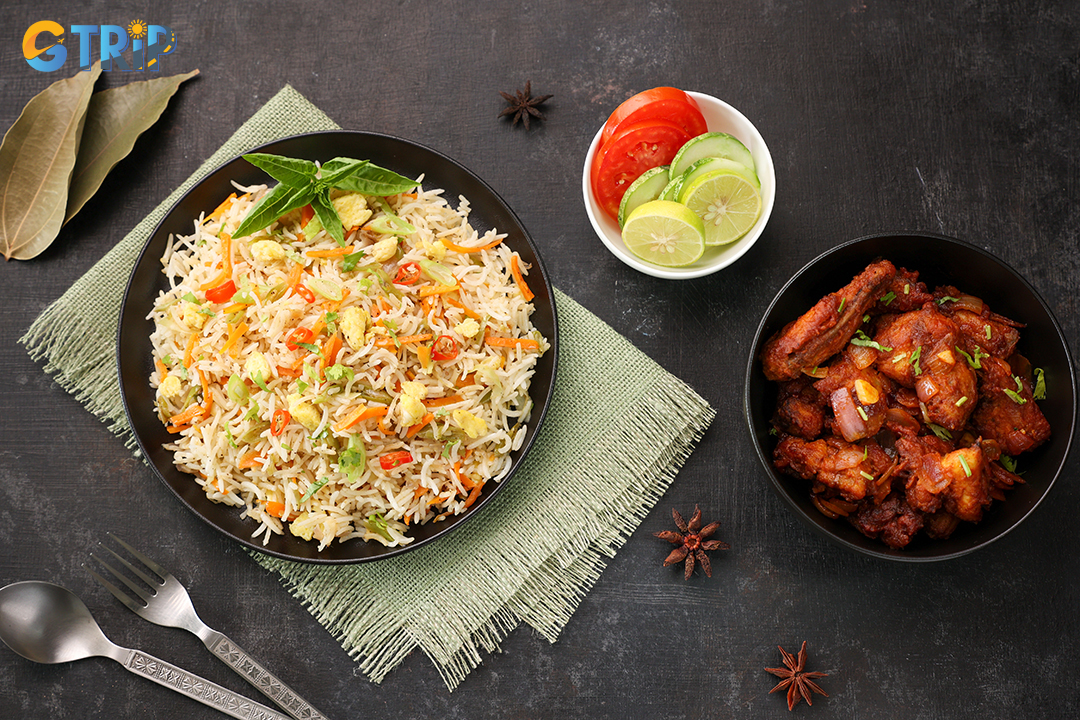Oct - 19 - 2023
Sri Lanka food owns its unique flavors to a fascinating blend of influences from around the world. The tapestry of Sri Lanka cuisine is a testament to the island's historical interactions with a multitude of nations and civilizations. In this article, we will explore the diverse countries that have left their mark on Sri Lanka food.
Sri Lanka food overview
Sri Lanka food is a mesmerizing fusion of flavors and spices that promises to take travelers on an unforgettable gastronomic journey. The heart of this culinary experience lies in its bold use of aromatic spices, showcased in dishes like fiery curries, savory hoppers, and mouthwatering sambols. With influences from Indian, Arab, Malay, and European cuisines, Sri Lankan cuisine offers an array of flavors to satisfy any palate. Sri Lankan food not only tantalizes the taste buds but also offers a glimpse into the cultural diversity and rich heritage of the island.
The multifaceted influences on Sri Lanka food
Sri Lanka food is influenced by numerous countries.
India: The closest neighbor
The most significant influence on Sri Lanka food comes from its closest neighbor, India. Sri Lanka shares a similar climate and geography with South India, which has contributed to the prevalence of spices, rice, and lentils in both cuisines. Indian culinary techniques such as curries, biryanis, and dosas have found a permanent place in Sri Lanka cuisine.
The influence of Indian cuisine is particularly evident in the abundance of curries in Sri Lanka cuisine. Spices like cumin, coriander, turmeric, and cardamom are generously used, giving Sri Lankan curries their distinct aroma and flavor. Dishes like chicken curry, dhal curry, and fish curry are staples in Sri Lankan households, mirroring their Indian counterparts.

The most significant influence on Sri Lanka food comes from India
Colonial heritage: Portuguese, Dutch, and British influences
Sri Lanka's colonial history plays a significant role in its culinary diversity. Over the centuries, the island was ruled by the Portuguese, Dutch, and British, each leaving their mark on the local food culture.
The Portuguese introduced ingredients like chilies, tomatoes, and potatoes, which have since become integral to Sri Lanka food. One of the most beloved Sri Lankan dishes, "deviled" preparations, is a direct result of Portuguese influence, characterized by the use of fiery spices and vinegar.

Portuguese introduced ingredients like chilies, tomatoes, and potatoes to Sri Lanka food
The Dutch colonial period brought a love for sweets to Sri Lanka. Dutch-inspired desserts like "love cake" and "dodol" are still enjoyed today, emphasizing the sweet influence of the Dutch on Sri Lanka cuisine.
The British, during their colonial rule, contributed to the transformation of Sri Lankan tea culture. The introduction of tea plantations led to the development of "Ceylon tea," which remains an essential part of the Sri Lankan way of life. Additionally, British culinary elements like roast dinners and high tea have found a place in the Sri Lankan diet, particularly in the hill country.
Southeast Asian flavors: Malay and Indonesian influences
Sri Lanka's location in the Indian Ocean makes it susceptible to culinary influences from Southeast Asia, particularly Malaysia and Indonesia. Elements of Malay and Indonesian cuisine are evident in Sri Lankan dishes such as "Lamprais" and "Wambatu Moju."
"Lamprais," which translates to "lump rice," is a unique Sri Lankan dish with Dutch-Burgher origins. It features rice cooked with a medley of ingredients like meat, vegetables, and sambol, all wrapped in a banana leaf. This concept of a complete meal in a single package has been influenced by Indonesian culinary practices.
"Wambatu Moju" is a tangy and spicy eggplant pickle that closely resembles the Indonesian "sambal." The influence of Indonesian cuisine can also be seen in Sri Lankan spice blends that often feature lemongrass, ginger, and coconut milk.

Sri Lanka food has also been influenced by Southeast Asia, particularly Malaysia, and Indonesia
Arab traders: The spice route connection
The historical spice route played a vital role in connecting Sri Lanka with the Arab world. Arab traders introduced an array of aromatic spices and condiments, including cloves, cardamom, cinnamon, and saffron. The use of these spices in Sri Lankan cooking is a direct result of this historical connection.
The "biryani," a fragrant rice dish, is an example of Arab influence on Sri Lanka food. It is a flavorful mix of rice, spices, and meat that has been adapted to local tastes over the years.
The Sri Lankan "watalappam" dessert is another dish that showcases Arab influence. This delectable custard pudding is flavored with spices and has a creamy, aromatic quality that reflects its Arabian roots.

Arab traders played a vital role in introducing an array of aromatic spices and condiments to Sri Lanka food
Global trade routes: Chinese and European impacts
Sri Lanka's strategic location along global trade routes has introduced diverse culinary elements from around the world. Chinese and European influences, in particular, have played a significant role in shaping Sri Lanka cuisine.
Chinese culinary influence can be seen in Sri Lankan dishes like "Fried Rice" and "Sweet and Sour Pork." These dishes have been adapted and transformed into local favorites, incorporating ingredients like rice, soy sauce, and vinegar.
European culinary practices, brought to Sri Lanka by the Portuguese, Dutch, and British, have made a profound impact. The use of ingredients like wheat, potatoes, and refined sugar can be attributed to European influences. The "short eats" culture, which includes pastries, cakes, and sandwiches, was introduced by the British and remains an essential part of Sri Lanka food culture.

Chinese and European influences have played a significant role in shaping Sri Lanka cuisine
Sri Lanka food has been inspired by India, Arab traders, Southeast Asia, and colonial forces, resulting in a distinct tapestry of flavors and cuisines. Sri Lanka cuisine is a savory voyage through time, making it a remarkable and ever-evolving element of the country's cultural legacy.


